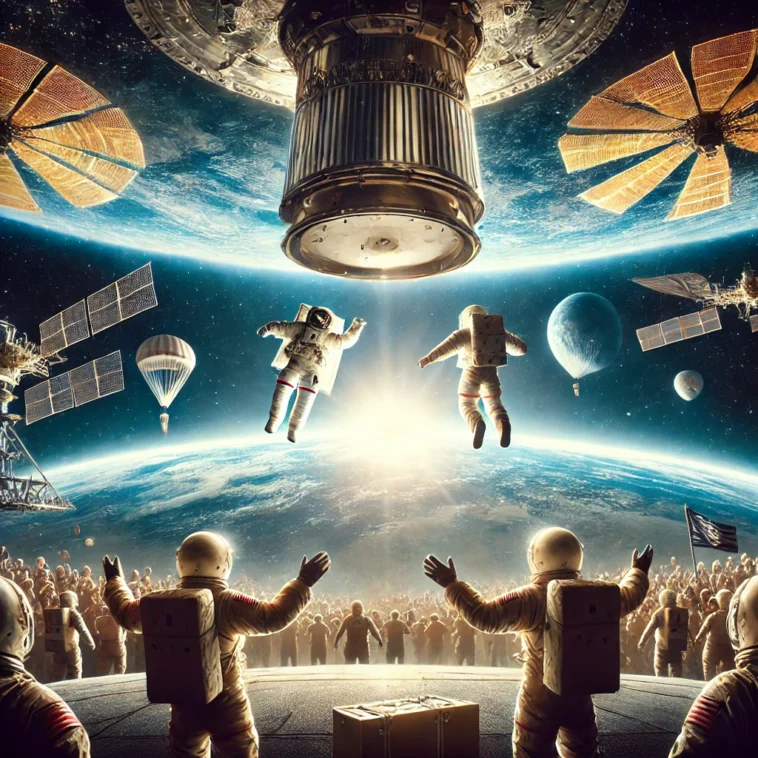 9 Months in Space: What Astronauts Learned After Their Historic Return to Earth
9 Months in Space: What Astronauts Learned After Their Historic Return to Earth
On March 18, 2025, NASA astronauts Barry “Butch” Wilmore and Sunita “Suni” Williams successfully returned to Earth after an unexpected 9-month mission aboard the International Space Station (ISS). Initially planned for a short stay, their mission was extended due to technical challenges — turning it into a groundbreaking opportunity to study the long-term effects of space travel.
Let’s explore what they discovered during this historic journey:
 1. How Space Changed Their Bodies
1. How Space Changed Their Bodies

-
Astronauts lose 1-1.5% bone density per month in microgravity, weakening their bones and muscles.
-
Extensive rehabilitation is required after returning to Earth to regain strength.

-
Without gravity, body fluids move upward, causing puffy faces and vision issues due to increased intracranial pressure.
 2. Psychological & Emotional Effects
2. Psychological & Emotional Effects

-
Isolation, confined spaces, and a lack of natural light create sleep disturbances and mood swings.
-
Long missions can lead to “space fatigue”, affecting performance and morale.

-
To stay mentally healthy, astronauts engaged in:
Virtual reality experiences
Watching Earth from the Cupola window
Growing plants in the space garden
Learning new skills, like languages
 3. Radiation Exposure: An Invisible Threat
3. Radiation Exposure: An Invisible Threat

-
Astronauts face 200 times more radiation than people on Earth.
-
This increases the risk of cancer, vision loss, and long-term organ damage.

-
The ISS offers partial protection, but improved shielding technologies are crucial for future deep-space missions like Mars.
 4. Technical Challenges: Adapting on the Fly
4. Technical Challenges: Adapting on the Fly

-
A malfunction in the original return vehicle forced the astronauts to stay longer than planned.
-
Engineers on Earth worked tirelessly to prepare an alternative SpaceX capsule for a safe return.

-
The crew’s adaptability demonstrated the importance of on-the-spot troubleshooting — a critical skill for future missions.
 5. Scientific Breakthroughs
5. Scientific Breakthroughs

-
The astronauts participated in over 150 experiments, studying muscle degeneration, bone loss, and fluid shifts.

-
New life-support technologies were tested to ensure reliable oxygen, water recycling, and food production for long missions.
 6. What This Means for Future Space Missions
6. What This Means for Future Space Missions

-
The mission provided valuable data on how the human body and mind endure prolonged space travel — paving the way for missions to Mars and beyond.

-
Psychological insights will help NASA refine astronaut recruitment and training, focusing on resilience and teamwork.
 A Giant Leap for Space Exploration
A Giant Leap for Space Exploration
The 9-month mission of Wilmore and Williams wasn’t just about survival — it was a groundbreaking journey that advanced human understanding of long-duration space travel. From physical changes to mental resilience, radiation exposure, and technological innovations, their extended stay will help shape the future of deep-space exploration.
Humanity is now one step closer to Mars — and even beyond the solar system.

Share this:
- Click to share on Facebook (Opens in new window) Facebook
- Click to share on X (Opens in new window) X
- Click to share on LinkedIn (Opens in new window) LinkedIn
- Click to share on Reddit (Opens in new window) Reddit
- Click to share on Tumblr (Opens in new window) Tumblr
- Click to share on Pocket (Opens in new window) Pocket
- Click to share on WhatsApp (Opens in new window) WhatsApp




One Comment
Leave a ReplyOne Ping
Pingback:Prolonged Space Mission: 9 Months Aboard the ISS